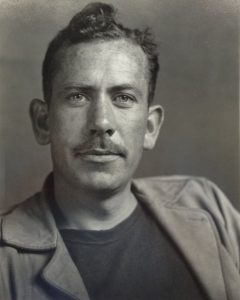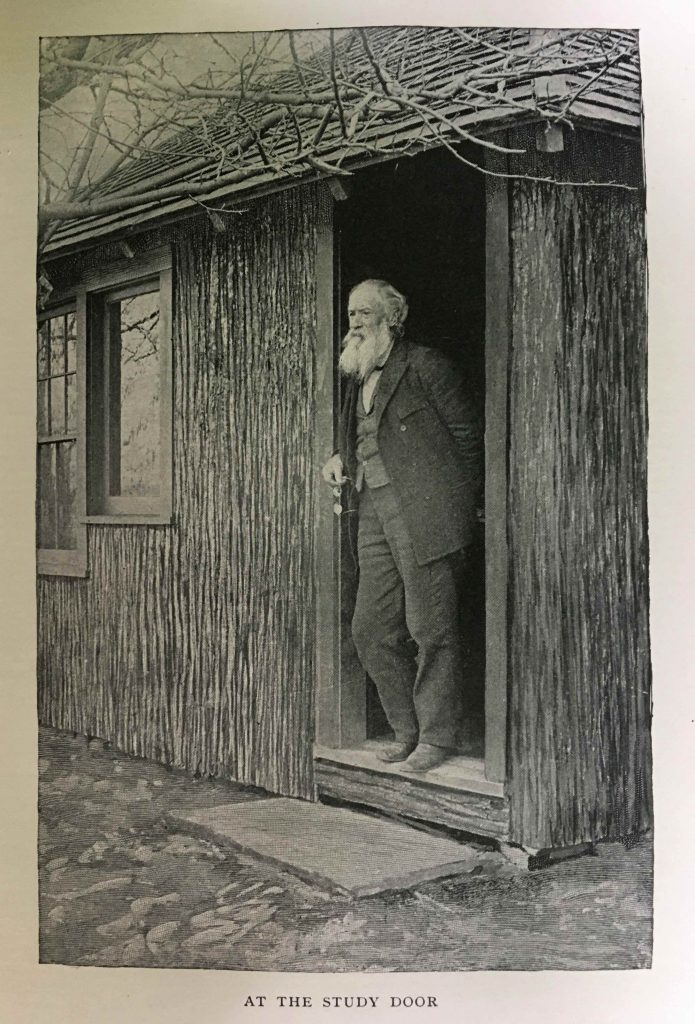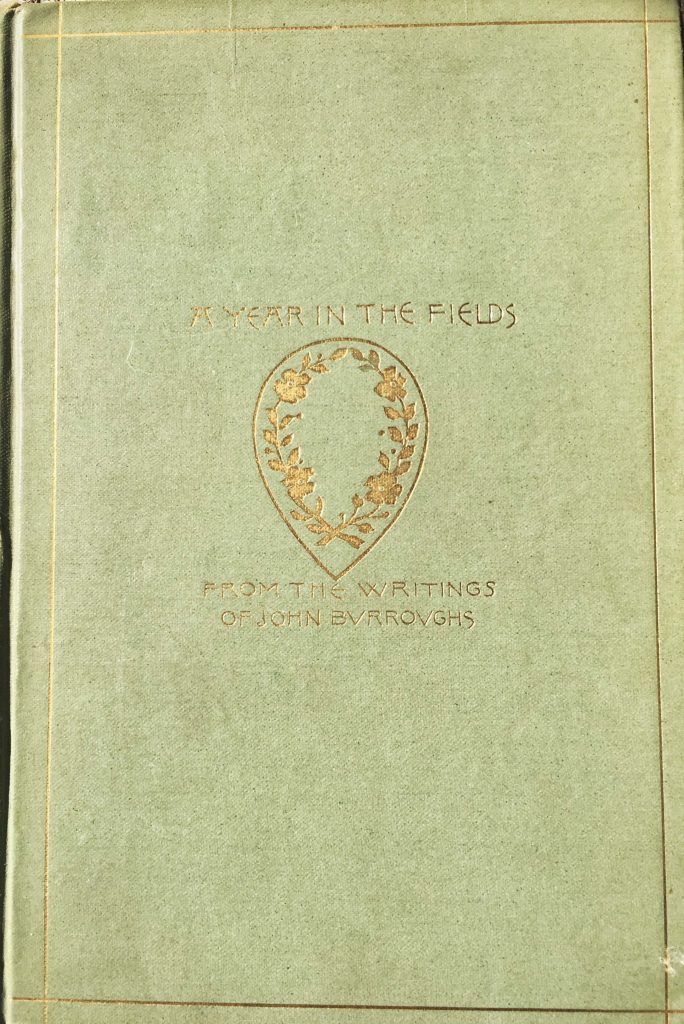
Our own interest lay in relationships of animal to animal. If one observes in this relational sense, it seems apparent that species are only commas in a sentence, that each species is at once the point and the base of a pyramid, that all life is relational to a point where an Einsteinian relativity seems to emerge. And then not only the meaning but the feeling about species grows misty. One merges into another, groups melt into ecological groups until the time when what we know as life meets and enters what we think of as non-life: barnacle and rock, rock and earth, earth and tree, tree and rain and air. And the units nestle into the whole and are inseparable from it. Then one can come back to the microscope and the tide pool and the aquarium. But the little animals are found to be changed, no longer set apart and alone. And it is a strange thing that most of the feeling we call religious, most of the mystical outcrying which is one of the most prized and used and desired reactions of our species, is really the understanding and the attempt to say that man is related to the whole thing, related inextricably to all reality, known as unknowable. This is a simple thing to say, but the profound feeling of it made a Jesus, a St. Augustine, a St. Francis, a Roger Bacon, a Charles Darwin, and an Einstein. Each of them in his own tempo and with his own voice discovered and reaffirmed with astonishment the knowledge that all things are one thing and that one thing is all things — plankton, a shimmering phosphorescence on the sea and the spinning planets and an expanding universe, all bound together by the elastic string of time. It is advisable to look from the tide pool to the stars and then back to the tide pool again.
JOHN STEINBECK HAD AN EYE FOR THE QUOTIDIAN AND AN EYE FOR THE COSMIC, AND IN “THE LOG FROM THE SEA OF CORTEZ” HE MOVED COMFORTABLY BETWEEN THE TWO. Ostensibly the account of a several-week boat excursion down the California coast and into the Gulf of California to collect marine specimens, it is actually a journey into the fundamental questions of (as Douglas Adams would say) life, the universe, and everything. From the beginning, Steinbeck cautions us that this will be no ordinary account of a voyage, with this nod to the recently-discovered Heisenberg Uncertainty Principle:
We said, “Let’s go wide open. Let’s see what we see, record what we find, and not fool ourselves with conventional scientific strictures. We could not observe a completely objective Sea of Cortez anyway, for in that lonely and uninhabited Gulf our boat and ourselves would change it the moment they entered. By going there, we would bring a new factor to the Gulf. Let us consider that factor and not be betrayed by this myth of permanent objective reality. If it exists at all, it is only available in pickled tatters or in distorted flashes. Let us go,” we said, “into the Sea of Cortez, realizing that we become forever a part of it; that our rubber boots slogging through a field of eelgrass, that the rocks we turn over in a tide pool, make us truly and permanently a factor in the ecology of the region. We shall take something away from it, but we shall leave something too.” And if we seem a small factor in a huge pattern, nevertheless it is of relative importance. We take a tiny colony of soft corals from a rock in a little water world. And that isn’t terribly important to the tide pool. Fifty miles away the Japanese shrimp boats are dredging with overlapping scoops, bringing up tons of shrimps, rapidly destroying the species so that it may never come back, and with the species destroying the ecological balance of the whole region. That isn’t very important to the world. And thousands of miles away the great bombs are falling and the stars are not moved thereby. None of it is important or all of it is.
NONE OF IT IS IMPORTANT OR ALL OF IT IS. Perhaps that sums up this book well. Steinbeck’s thought roams freely from one topic to another, constantly seeking out interconnections. At one moment, he is recording the shapes and colors of the marine invertebrates he encountered; in the next, teasing apart the threads of what we have woven together to call reality. From the near edge of my blog’s chronological scope, the world is a lot more uncertain than it was nearly eighty years previously. It is a world at war, a World War that Americans would join following Pearl Harbor in December of that year. And it is a world where the latest scientific upheaval is not the result of Darwin’s musings, but is instead the revolutions in Physics that produced both an Uncertainty Principle and a Relativistic Universe. The ground (or water, in this case) is constantly shifting beneath Steinbeck’s feet, and in-between downing beers and pickling marine specimens, in the midst of a relatively wild seascape teeming with life and energy (which Steinbeck calls (tuna water — life water), Steinbeck tries to make sense of his part — and our part — in it all. Ultimately, his biological work and philosophical thinking enable him to arrive at the meaning of life — or, at least — a meaning for all life — to survive:
In the little Bay of San Carlos, where there were many schools of a number of species, there was even a feeling (and “feeling” is used advisedly) of a larger unit which was the interrelation of species with their interdependence for food, even though that food be each other. A smoothly working larger animal surviving within itself — larval shrimp to little fish to larger fish to giant fish — one operating mechanism. And perhaps this unit of survival may key into the larger animal which is the life of all the sea, and this into the larger of the world. There would seem to be only one commandment for living things: Survive! And the forms and species and units and groups are armed for survival, fanged for survival, timid for it, fierce for it, clever for it, poisonous for it, intelligent for it. This commandment decrees the death and destruction of myriads of individuals for the survival of the whole. Life has one final end, to be alive; and all the tricks and mechanisms, all the successes and all the failures, are aimed at that end.
And in all of this, who are we? How does the individual human make sense of his or own life? Here, Steinbeck has little to offer — at least, communicated directly to the reader. Meanwhile, a couple of Indians he meets up with offer us one possible answer: we are caught up in a dream — part of everything, imagining a separateness which is not really there.
Their dark eyes never leave us. They seem actually to be dreaming. Sometimes we asked of the Indians the local names of animals we had taken, and then they consulted together. They seemed to live on remembered things, to be so related to the seashore and the rocky hills and the loneliness that they are these things. To ask about the country is like asking about themselves. “How many toes have you?” “What, toes? Let’s see — of course, ten. I have known them all my life, I never thought to count them. Of course it will rain tonight, I don’t know why. Something in me tells me I will rain tonight. Of course, I am the whole thing, now that I think about it. I ought to know when I will rain.”
AND ON THAT QUITE STRANGE PASSAGE, I WILL CLOSE OUT THIS POST. I admit that I struggled with classifying this book — does it qualify as a work of “nature writing”? I have puzzled over that category considerably in this project. Some titles fall completely into this genre. This one, though, is first and foremost a literary work. Nature is a part, but it is the entire weave that fascinated Steinbeck — the fish and the corals, yes, but the villagers and Indians, the sunlight and waves, the Japanese fishermen and the Mexican marine officials, the pickling jars and the skiff’s outboard motor (with a malignant mind of its own). None of it is important or all of it is. I will leave each reader to arrive at his or her own decision on that.

MY COPY OF THE BOOK WAS A NONDESCRIPT PENGUIN PAPERBACK, PAGES ALREADY WELL TANNED. This edition is copyrighted 1986, and I have been its sole owner. I purchased it in Fort Collins, Colorado, probably in 1987, on the recommendation of Dr. Ellen Wohl, my graduate and literary advisor. Although a native of Ohio, Wohl opened up my world to a host of remarkable authors of the American West, from Steinbeck to Stegner. I probably walked, or bicycled, from my rented room at 1016 Sycamore Street to purchase this book, back in the days before Amazon. I read it once, voraciously, and recall enjoying it greatly. I had not returned to it until the occasion of this blog.



